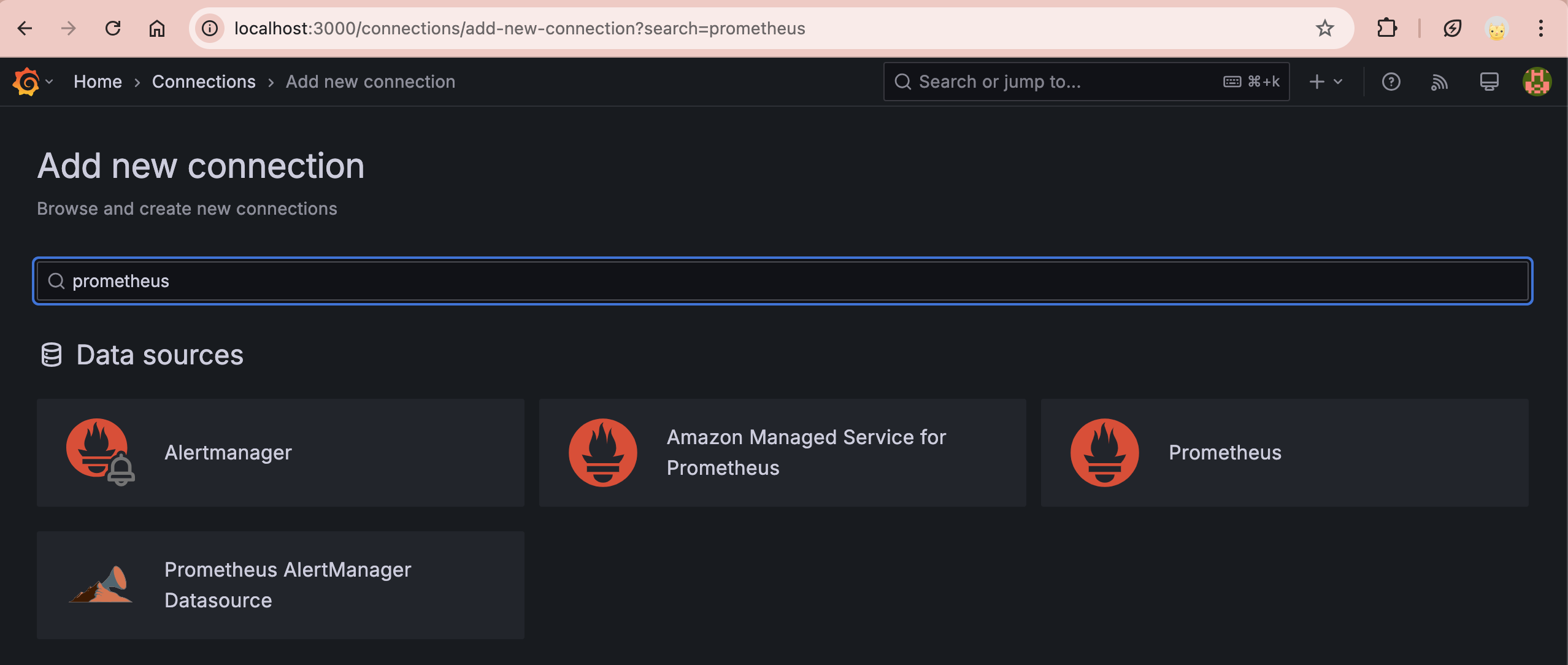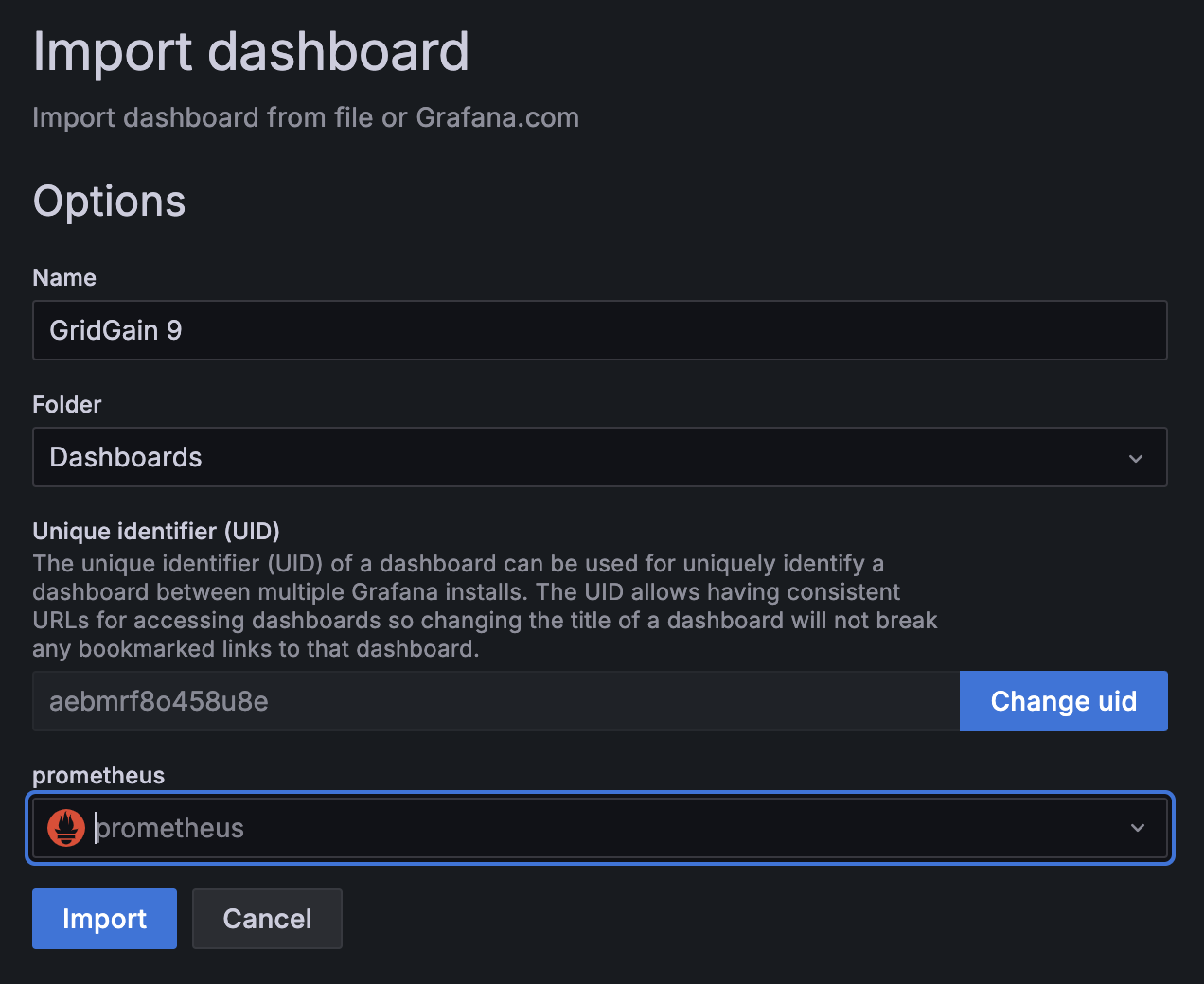GridGain 9 Metrics With Prometheus and Grafana
GridGain offers built-in support for monitoring its performance using tools like Prometheus and Grafana. This guide will walk you through setting up GridGain to send metrics to Prometheus via the OpenTelemetry (OTLP) protocol, and configuring Grafana to visualize these metrics.
Prerequisites
To follow this tutorial, you will need:
-
GridGain 9.0.13 or later
-
Grafana OSS 11.5.0
-
Prometheus server 3.1.0
GridGain Configuration
To export metrics from your GridGain cluster, you’ll need to modify the cluster configuration via CLI tool.
-
Open CLI and connect to any node in the cluster.
-
Specify the
exporterNameas the name for your OTLP endpoint and theendpointas the address of your Prometheus server. -
Run
cluster config updatecommand with modified configuration as an argument. The updated configuration will automatically be applied across the cluster.cluster config update ignite.metrics.exporters.test: {exporterName:otlp, endpoint:"http://localhost:9090/api/v1/otlp/v1/metrics", protocol:"http/protobuf"} -
After successfully running the command, you’ll see a
Cluster configuration was updated successfullymessage, and GridGain will automatically start sending metrics to the specified endpoint.
If it’s your first time setting up a GridGain cluster, check our corresponding documentation section for more details.
Prometheus Server Configuration
GridGain 9 comes with a built-in OTLP provider that allows to export cluster’s metrics. These metrics then can be collected and processed by Prometheus without any extra configuration steps.
-
All you need is to start your Prometheus Server with
--web.enable-otlp-receiveroption to receive metrics:Unix
./prometheus --config.file=./prometheus.yml --web.enable-otlp-receiverWindows
prometheus.exe --config.file=./prometheus.yml --web.enable-otlp-receiver -
By default, Prometheus starts on port
9090. Check http://localhost:9090 to verify it is up and running. -
For further instructions and how-to see Prometheus documentation.
Grafana Configuration
Finally, we will set up Grafana to monitor and display our metrics.
-
Download and install Grafana.
-
Once installed, start Grafana:
Unix
./grafana-serverWindows
grafana-server.exe
By default, Grafana will be available at http://localhost:3000/login.
-
Use default login credentials:
admin/admin. You must change them after your first login for security reasons. -
Navigate to Connections/Data sources and select Add data source.
-
Add Prometheus as the data source.

Once configured, Grafana will start receiving GridGain metrics from Prometheus. For a more detailed installation guide and how-to, refer to the official documentation.
Importing a Sample Dashboard
To help you quickly start collecting and visualizing GridGain metrics, we have prepared a pre-configured sample dashboard that you can import into Grafana. This dashboard provides a structured view of key cluster metrics, making it easier to monitor performance in real-time.
-
Download the sample dashboard JSON file.
-
Go to Dashboards → Create Dashboard, click Import Dashboard, and upload the file.

-
After successful import, Grafana will display your cluster metrics.

Now that your dashboard is set up, you have a comprehensive view of your GridGain metrics, enabling efficient monitoring, analysis, and performance tuning. To dive deeper into metrics and monitoring in GridGain, visit our corresponding documentation section.
© 2025 GridGain Systems, Inc. All Rights Reserved. Privacy Policy | Legal Notices. GridGain® is a registered trademark of GridGain Systems, Inc.
Apache, Apache Ignite, the Apache feather and the Apache Ignite logo are either registered trademarks or trademarks of The Apache Software Foundation.

